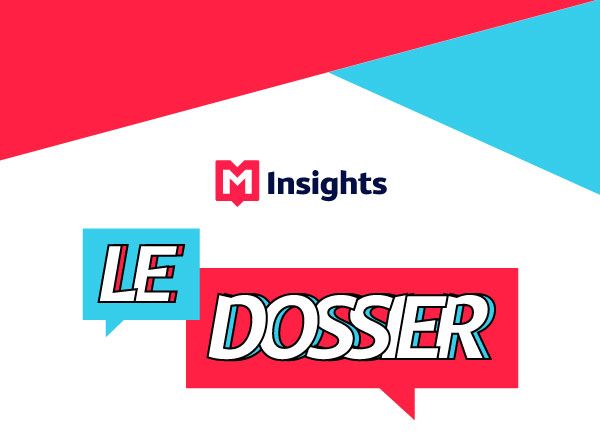- Home
- Results & Studies
- Young people at the forefront of the conversational AI revolution
Young people at the forefront of the conversational AI revolution
M Insights, The Dossier, is a monthly feature article based on the results of our studies, analyses, and expertise, providing an increasingly detailed understanding of market trends and insight into and analysis of changes in French media consumption habits.

Reading time : 4 minutes
In just three years, conversational AI has become a digital reflex for nearly 4 in 10 people in France. But it’s the 15-24 age group that is driving this change, revolutionizing usage patterns.
A particularly engaged 15-24 generation
In September 2025, nearly 4 out of 10 French people (38.1%)—24.5 million people—used a conversational agent such as Chat GPT, Google Gemini, or Le Chat, among others[1]. The growth is spectacular, as their audience has tripled in one year. More people are visiting these sites and spending twice as much time there as in September 2024.
The practice has become part of daily habits: 6 million people interacted with their chatbot every day in September 2025, four times more than a year earlier.
While all age groups have adopted them, the figures are even more striking among 15-24 year olds: nearly three-quarters of them (73.4%) consult them every month, and nearly a quarter (23.3%) every day. For this “Generation Z,” searching for information increasingly takes place through conversations with intelligent agents. Young people are followed by 25-34 year olds, more than one in two of whom (53.9%) had used conversational AI in September 2025.
This massive adoption of AI by young people is linked to their ability to quickly embrace innovation. The promise of a fluid and contextualized interaction is particularly appealing as it corresponds to their digital habits, which are centered on immediacy and personalization.
Young people are not just consumers, but also the driving force behind the spread of these new uses in society. Other age groups are following them: among 25- to 49-year-olds, around one in two uses conversational AI every month. Those aged 50-64 have also converted, although there is still room for growth: 34.9% of them used conversational AI in September 2025, compared to only 8.5% in September 2024.
A specific use
The spectacular growth of conversational AI sites raises questions about how they are used.
Internet users primarily use AI tools for educational purposes, to obtain explanations of concepts. They then use them in professional or educational contexts, and finally to find ideas for places to visit, leisure activities and outings. Users praise their practicality, efficiency, useful and performance. Non-users, on the other hand, find them “disturbing” or even “risky”[2].
“With a 20-fold increase in time spent on conversational AI tools in just two years, the acceleration in their use is staggering and unprecedented in the history of internet audience measurement. Thanks to our measurement systems, we can analyze in depth how these uses are changing the digital daily lives of French people, whether in terms of search behavior, access to information, or commerce,"
notes Bertrand Krug, Digital and Press Director at Médiamétrie//NetRatings.
A cultural shift
This growing interest in conversational AI among young people outlines a future where models are increasingly hybridized and search engines increasingly integrate AI. Brands and institutions have understood this: they are stepping up initiatives to develop their own assistants—such as Ralph Lauren with “Ask Ralph” in the shopping sector—in order to stay in tune with these new uses.
At the same time, in France, the market is structured around major offerings: OpenAI with ChatGPT, the first to arrive, is distancing itself from other players with 21.6 million unique visitors in September 2025. It is followed by Google Gemini (2.8 million), Mistral AI with its “Chat” (1.5 million), Perplexity (1.3 million), and Microsoft Copilot (1 million). The rise of Mistral, which in 2025 became the first French “decacorn,” is fueling a national dynamic.
What’s next?
The question is no longer whether conversational AI will prevail, but how it will permanently transform information search, learning, and consumption practices. And in this changing landscape, young people appear to be the driving force, setting a pace of adoption that is pushing all generations to follow suit.
[1] Source: Médiamétrie - Mediametrie//NetRatings - Total Internet Audience - France – September 2025 - Base: 2 years and older - Copyright Mediametrie//NetRatings - All rights reserved.
[2] Source: Social Media Observatory – 1st half of 2025 – Base: 15 years and older – Médiamétrie – All rights reserved.
Publication management: Médiamétrie Communications Team
Editor: Laure Osmanian Molinero
des médias
edition
definitions